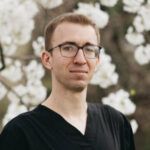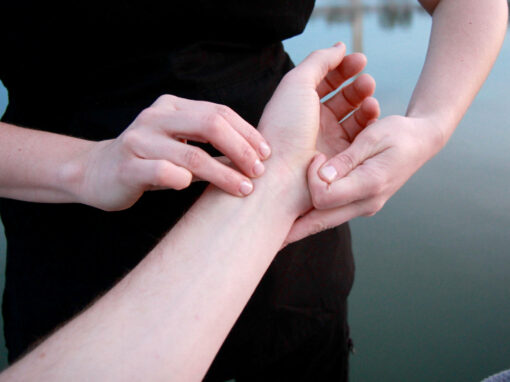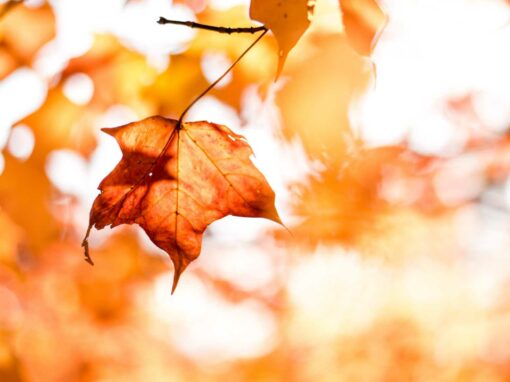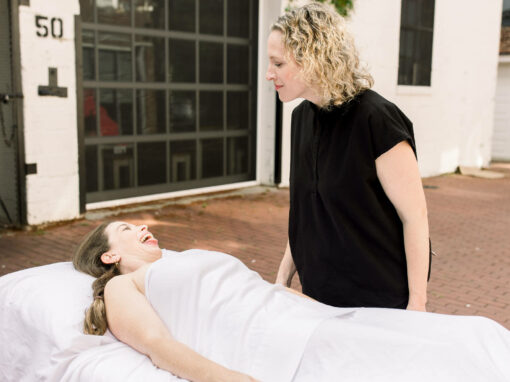What we do at Cherry Blossom Healing Arts includes so much more than just acupuncture. We commonly refer to this system as Traditional Chinese Medicine (TCM). TCM encompasses a rich lineage of acupuncture, Chinese herbal medicine, body work such as cupping and gua sha, nutrition, and even more. Read on to learn more about TCM and what we can do to help you feel your best.
Quick Links to the Sections Below
What is Acupuncture?
Acupuncture is the insertion of filiform needles into specific points on the body for the treatment of various conditions. Acupuncture has existed for over 2,500 years and is supported by modern science. Each year, new studies are published that demonstrate the effectiveness of acupuncture in the treatment of pain, especially compared to opioid medications. So, how does it work?
How Does Acupuncture Work?
Acupuncture has many complex actions, and how it exactly works is not yet known. However, there are several theories about its mechanisms, which can give us insight into its effects.
One theory is that acupuncture works by increasing nerve signals. Needle insertion activates receptor sites, or neural nodes, which releases natural opioids and endorphins as well as making your brain more receptive to those chemicals2. In addition to increasing neurotransmitters, needle insertion also stimulates our immune system, “drawing” our body’s attention to the affected area and activating the normal healing cascade.
Lastly, needles are also thought to work on the fascial layer of the body, which is the cellophane-like wrapping surrounding our muscles. The fascia connects virtually all muscles in our body and is an essential part of our structural support system. The fascia works by tensegrity, like the Brooklyn Bridge in Manhattan, which means its strength is dependent on the tension between its component parts. Just like touching a spider’s web, if you pull on one corner, it moves the whole system. This explains how acupuncture needles are able to adjust the body’s structure and how a needle inserted into your foot can affect your headache.
What is Cupping and How Does it Work?
The practice of cupping has a rich and varied history, examples of which can be seen in many cultures around the world. Cupping is frequently used in conjunction with acupuncture to treat many types of pain.
Cups are applied to the body with suction and can be made from a variety of substances, including glass, plastic, bamboo, or silicon. This suction increases circulation by mechanically drawing more blood to the area.
Cupping also releases muscle knots and adhesions by pulling up the soft tissue and allowing it to separate. It can be thought of like a deep tissue massage but in reverse! Cupping commonly leaves bruises, which are caused by a weakening of the microvasculature in the surface layers of our skin which rupture when the cup is applied. These bruises commonly disappear within 5-7 days, leaving the circulation stronger as a result.
What is Gua Sha?
Similar to cupping, gua sha is a type of manual therapy that is commonly used in the treatment of pain. Gua Sha is the use of a tool, typically made of stone, horn, or metal, to release adhesions in soft tissue.
Gua Sha is performed by first applying massage oil to the affected area, then moving the tool in a pushing or scraping motion across the skin. This motion forces adhesions in the fascia and superficial muscle layer to break apart, which relieves pain and increases circulation allowing the area to properly heal.
Like cupping, Gua Sha also leaves markings caused by small ruptures in the microvasculature. Marking from Gua Sha usually heals within a few days, also making the circulation stronger as a result.
How TCM works with Chinese Herbs
Chinese herbal medicine has a huge variety of applications, including the treatment of pain. Most of the pharmaceutical drugs we use today are derived from plants, some of which come from the Chinese pharmacopoeia.
Like drugs, herbs also have active ingredients. However, each herb can have tens or even hundreds of different compounds. Opposed to Western herbs, which are usually given in singles, Chinese herbs are almost always prescribed in a formula.
Herbal Formulas Tailored for the Individual—Not the Symptom
Formulas commonly consist of 4–15 different herbs. When these herbs are combined, each formula has hundreds or thousands of compounds acting on your body. Many of these compounds are active ingredients, but not all. Some of the other compounds help to “balance out” the active ingredients, which may be why Chinese herbs have fewer side effects than drugs.
Each formula is tailored to the individual and can be given in a variety of forms. Most commonly, we prescribe herbs in pill form (which can be tablets or capsules) or in powder form (you can think of this like a herbal instant-coffee).
Herbs and formulas given for pain conditions most commonly have anti-inflammatory, analgesic, and circulatory properties. Because formulas are prescribed for the individual, as opposed to the condition, they can have more functions than those listed above.
As you can see, we can treat your entire body with the many tools available to practitioners of TCM. We can help you feel better using acupuncture, customized Chinese herbal medicine, cupping, and gua sha. We always customize treatments to you and your body’s unique needs.
We Treat Your Body’s Unique Needs
As you can see, we can treat your entire body with the many tools available to practitioners of TCM. We can help you feel better using acupuncture, customized Chinese herbal medicine, cupping, and gua sha. We always customize treatments to you and your body’s unique needs.
To get started, head to our booking page and schedule your first appointment. If you’d like us to check your insurance benefits, we’d be happy to take care of that for you. We are in-network with CareFirst/BlueCross and Aetna.
Works Cited
- Russell, D. & Hopper Koppelman, M. (2017).
Acupuncture For Pain. Evidence Based Acupuncture. - Zhao, Zhi-Qi. “Neural Mechanism Underlying Acupuncture Analgesia.”
Progress in Neurobiology, vol. 85, no. 4, 19 Mar. 2008, pp. 355–375., doi:10.1016/j.pneurobio.2008.05.004.
About the Author
I find working as an acupuncturist to be truly inspiring, and am excited to come to work each day. I consider myself to be an integrative practitioner, and while I focus on Chinese medicine, I also incorporate Western medical concepts to best serve my patients.



